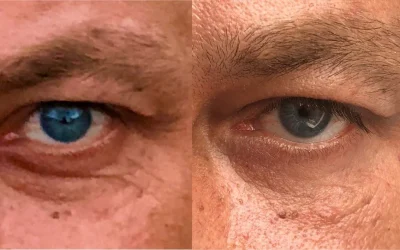Fast Company Interview – Jaewoon Jung and the Galaxy SmartTag

What is the Galaxy SmartTag?
The Galaxy SmartTag is a Bluetooth tracker that connects to your smartphone and lets you find things you’ve misplaced. It works in much the same way as Tile, Chipolo and Apple AirTag – it hooks onto your keys or bag and pairs with your phone.
There are two versions, one that connects via Bluetooth Low Energy (LE) and the other that uses Ultra Wideband to offer a more precise location. The former is $30 and will start shipping from January 29 while the latter costs $40.
When the SmartTag is linked to your smartphone it’s tracked using the SmartThings Find system within Samsung’s SmartThings app, and can be found by nearby devices that have this service installed. It can also play a ringtone that will help you find it even further away.
In addition to tracking, the Galaxy SmartTag has a button that you can use to control your IoT home devices from the phone app. This makes the device function as a smart home remote in a similar way to a Nest Thermostat.
You can also set up a “find network” of other Samsung Galaxy devices that you can use to locate your lost SmartTag, as well as allowing you to search for lost items on a map. It’s a great way to get a quick response if your tracker is lost, although it only works as far as 60 feet away from your device and won’t work in real-time.
What’s more, it can be paired with the SmartThings Find Network so you can be notified when your tracker is found. This isn’t as accurate as a Tile Premium, but it’s better than nothing.
To make sure you can find your SmartTag, it emits a Bluetooth Low Energy signal that other Galaxy devices with the SmartThings app installed can detect. This helps it connect with other people’s devices and be able to trace its location, as well as showing you its last connected location on a map when you open the SmartThings app.
In short, the Samsung Galaxy SmartTag is a very useful gadget that offers a lot of peace of mind for those who lose valuable possessions frequently and/or are worried about what could happen if they ever misplace something. It’s a very small, lightweight device that won’t be intrusive and doesn’t look out of place in your pocket or on your keychain. Here we will discuss every point of interview fastcompany jaeyeon jung smarttag December.
What is the Cosmic System?
The Cosmic System is a vast cosmological structure of matter which includes stars, planets, moons, comets, asteroids, planetary rings, and other objects. It also includes dark energy and dark matter.
It is believed that the universe has a beginning and a continuing expansion. This is known as the Big Bang Model and it combines observational astronomy and particle physics. Modern cosmology is dominated by the Big Bang Theory but there are other theories of the cosmos.
There are three main models of the initial state: inflationary cosmology, de Sitter cosmology, and plasma cosmology. Each of these models has its own unique features.
Inflationary cosmology (also known as the Big Bang model) originated in 1960 and is based on the general theory of relativity. This model was the first to describe the accelerated expansion of the universe. It was also the first to account for several otherwise puzzling aspects of the initial state, including a “flat” and “unstable” universe.
Flat Universe
The flat universe was an early model of the cosmos proposed by French physicist Louis de Broglie in 1908. He proposed that space is empty and contains only energy. He also predicted that there would be no gravity.
A second model was proposed by Belgian priest Georges Lemaitre in 1927. This model was later substantiated by Edwin Hubble’s discovery of the redshift in 1929 and by the discovery of cosmic microwave background radiation in 1964.
He also invented the cosmological constant which was found to be non-zero in all models of the initial state. This led to the development of the Big Bang model, which explains the expansion of the universe as a result of the cosmological constant.
De Sitter cosmology is another model of the universe that proposes a flat spherical universe. It is a more complex model that is based on Einstein’s general theory of relativity.
It is the most popular model of the universe and the most accepted model for the early universe. This model proposes that the universe began with a single point of mass and radiation, which expanded rapidly to become the large-scale structure we see today.
What is the Shop-Igniter application?
Shop-Igniter powers online storefronts for retailers on Facebook, allowing users to buy products through a branded application. The software enables users to add new products, pricing, options, categories, collections, brands and more. It also allows buyers to post reviews and complete transactions directly within the branded application.
Portland-based ShopIgniter, which is backed by Madrona Venture Group and Trinity Ventures, helps brands create and maintain storefronts on social networks such as Facebook. Its platform also enables marketers to deliver and manage social mobile campaigns for brands such as Target, Ford, Comcast, Sony Music and Universal.
Seattle-based video advertising firm Mixpo acquired ShopIgniter in a deal that will merge the companies into a firm specializing in advertising across multiple consumer devices, according to a news release. The companies will combine to have about 100 employees, with Mixpo keeping ShopIgniter’s office in Portland. The deal is expected to close later this month. Mixpo CEO Jeff Lanctot has served as an adviser to ShopIgniter since 2010. He said the merger will help the companies better focus on video advertising in the social space, which is increasing in importance for marketers.
What is the System Savvy Tag?
The System Savvy Tag is an embedded, software-based system that lets you manage a variety of smart devices on your local or remote network. It includes the latest in Bluetooth technology, Wi-Fi connectivity and a custom app for your Apple mobile device. The tag also contains a built-in comms interface that lets you communicate with the device over Ethernet, USB or serial.
Typical features include a display of key parameters, a graphical signal flow diagram and enhanced system wide navigation. Among the many options is an Engineering Info window with a large, multi-line status bar showing a host of adornments to convey contextual information. The SFD view is a bit more complex but a great way to get an overview of the incoming data from your device and its associated control options.
Unlike the home-view, the SFD is not automatically zoomed and panned to fit a single screen. The SFD is a two-paned view with the top pane showing the main information and a secondary pane displaying function blocks and connections. You can zoom and pan by holding the h key on your keyboard or by using the scrollwheel on a numeric keyboard.
Also Read ;What Are the Features of Technical Communication?











